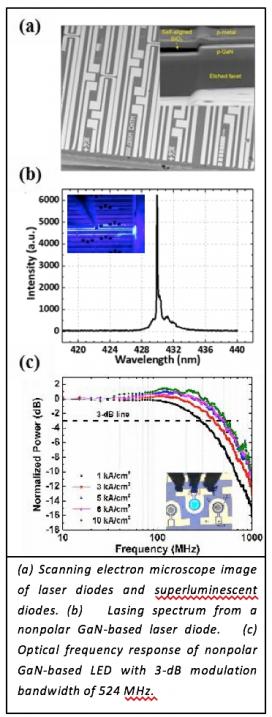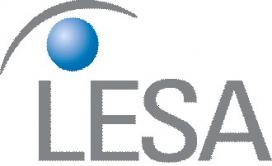Center Develops Optoelectronic Devices for Next-Generation High-Efficiency Lighting Systems
Researchers at the Center for Lighting Enabled Systems & Applications (LESA), an NSF-funded Engineering Research Center (ERC) headquartered at Rensselaer Polytechnic Institute (RPI), are using novel orientations of gallium nitride (GaN) to make significant advances in optoelectronic devices that are specifically tailored for the technologies the Center focuses on developing.
The team is working on high-speed light-emitting diodes (LEDs), laser diodes, and super-luminescent diodes that have high-quality, energy efficient, and color tunable lighting that will be key components of next-generation lighting systems. These advanced features include a small form factor, large modulation bandwidth, and spatially coherent output beams.
Lasers and super-luminescent diodes are expected to deliver many improvements to current lighting systems by addressing two limitations: efficiency droop (poor performance at higher operating currents), and the “green gap” problem (poor performance at longer emission wavelengths).
Lasers and super-luminescent diodes operate off the principle of stimulated emission—a fast carrier recombination process—and are less susceptible to efficiency droop than conventional LEDs. The ERC team at the University of New Mexico (UNM) is also using non-polar and semi-polar crystal orientations to circumvent long-standing issues in GaN-based materials and to enable more efficient emitters with improved functionality for lighting systems.
Recently, the team demonstrated high-speed non-polar LEDs with modulation bandwidths beyond 500 MHz. The researchers’ ongoing work includes designing and fabricating laser diodes and super-luminescent diodes that are expected to exhibit even larger modulation bandwidths.



